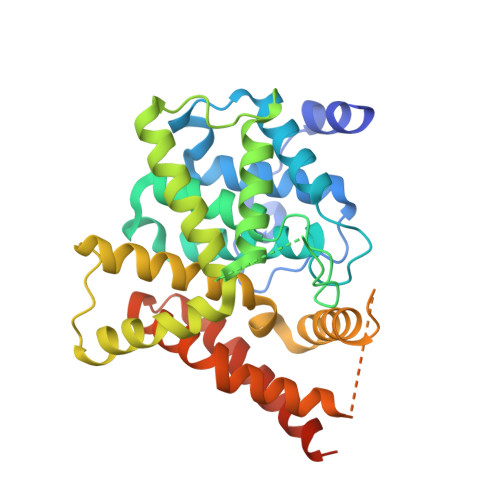Free energy perturbation (FEP)-guided scaffold hopping.
Wu, D., Zheng, X., Liu, R., Li, Z., Jiang, Z., Zhou, Q., Huang, Y., Wu, X.N., Zhang, C., Huang, Y.Y., Luo, H.B.(2022) Acta Pharm Sin B 12: 1351-1362
- PubMed: 35530128
- DOI: https://doi.org/10.1016/j.apsb.2021.09.027
- Primary Citation of Related Structures:
7FAQ, 7FAR - PubMed Abstract:
Scaffold hopping refers to computer-aided screening for active compounds with different structures against the same receptor to enrich privileged scaffolds, which is a topic of high interest in organic and medicinal chemistry. However, most approaches cannot efficiently predict the potency level of candidates after scaffold hopping. Herein, we identified potent PDE5 inhibitors with a novel scaffold via a free energy perturbation (FEP)-guided scaffold-hopping strategy, and FEP shows great advantages to precisely predict the theoretical binding potencies Δ G FEP between ligands and their target, which were more consistent with the experimental binding potencies Δ G EXP (the mean absolute deviations
Δ G FEP - Δ G EXP | < 2 kcal/mol) than those Δ G MM-PBSA or Δ G MM-GBSA predicted by the MM-PBSA or MM-GBSA method. Lead L12 had an IC 50 of 8.7 nmol/L and exhibited a different binding pattern in its crystal structure with PDE5 from the famous starting drug tadalafil. Our work provides the first report via the FEP-guided scaffold hopping strategy for potent inhibitor discovery with a novel scaffold, implying that it will have a variety of future applications in rational molecular design and drug discovery. - School of Pharmaceutical Sciences, Hainan University, Haikou 570228, China.
Organizational Affiliation:



















